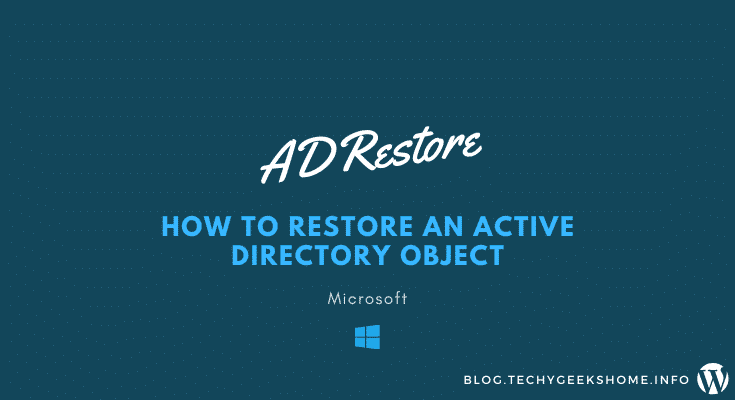
After you’ve enabled the Active Directory Recycle Bin, any objects which have been subsequently deleted will be recoverable inside their entirety with the duration on the forest’s deleted object life span.
We're going to review ways to use many applications for recovering deleted Active Directory object in the event that which the Active Directory recycle bin wasn't enabled.
If you'd like to have A prosperous restore together with all characteristics in the user, you should envisage to do Authoritative Restore that have to have you to definitely restore from backup. and you may not restore the active directory databases from backup without the need of restarting to Active Directory Restore Method.
This parameter may get this object in the pipeline or you may set this parameter to an object instance.
An authoritative restore is following stage on the non-authoritative restore method. We've got do non-authoritative restore before you decide to can perform an authoritative restore. The principle distinction is that an authoritative restore has the ability to increment the Edition variety of the attributes of all objects or someone object in a complete directory, this could make it authoritative restore an object while in the directory. This can be utilized to restore a single deleted person/group and event a complete OU.
When Active Directory deletes an object from the directory, it doesn't physically take away the object from the databases. In its place, Active Directory marks the object as deleted by location the object’s isDeleted attribute to Legitimate, stripping a lot of the characteristics from the object, renaming the object, after which you can moving the object to some Distinctive container during the object’s naming context (NC) named CN=Deleted Objects. The object, now called a tombstone, is invisible to normal directory functions.
In this instance, we would want to restore from the Active Directory recycle bin, a especially deleted person account. We will reference the deleted user account by using the user GUID.
If the Active Directory Domain Providers start, the object that you choose to restore is going to be replicated to another area controllers while in the domain.
Now it’s the perfect time to specify the object that should be restored. check here You can do so by using the Restore Object command.
The most common reason for failure can be an incorrectly specified distinguished name or possibly a backup for which the distinguished name won't exist (which takes place if you try to restore a deleted object that was designed once the backup).
Non-authoritative restore is restore the area controller to its state at the time of backup, and permits usual replication to overwrite restored area controller with any variations which have happened once the backup.
If you delete an Advert object, quite a few points materialize at the rear of the scenes. Most significant, deleting an object doesn’t straight correlate to a record being eradicated from the Advert database. To maintain regularity in Advertisement’s replication product, objects initially changeover through a condition generally known as currently being tombstoned, as Figure one exhibits.
By default, an object stays while in the deleted object stage for the same length of time since the forest’s tombstone lifetime, read more as outlined in Desk one. It is possible to adjust this time period by modifying the forest’s msDS-deletedObjectLifetime attribute.
· Using tombstone reanimation – a complicated system that enabled you to recover deleted objects from CN=Deleted Objects. To find out more details on more info this restoration approach, take a look at this